Why Did 90s Conspiracy Theorists Get So Caught Up In RAF Rudloe Manor?
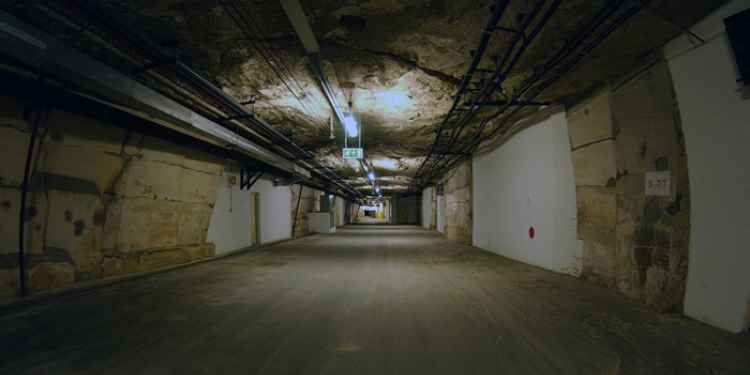
Photo: Crown Copyright

Photo: Crown Copyright
This page is more than eight years old and was last updated in March 2018.
The Secrets Of RAF Rudloe Manor, Corsham
In the mid-90s ufologists and bunker busters became obsessed with the historic market town of Corsham and the rumours of what lies beneath it, but why did this sleepy Wiltshire town become such a hub for conspiracy theorists?
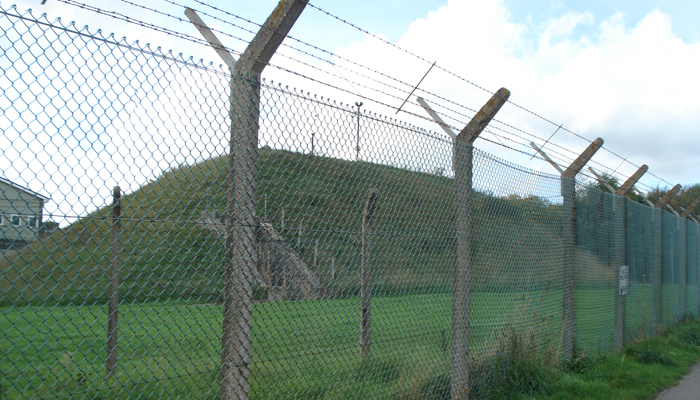
Taking a drive along Westwells Road in Corsham today, it's easy to see why conspiracy theorist got so excited about the area twenty years ago. Back then very little was known about the RAF base and even less about what went on below ground there.
In fact, at this time the Ministry of Defence refused to even admit that there was anything underground at Corsham, yet the inquisitive could peer through the fences and see ominous mounds of grass with doorways leading into them, as well as air shafts poking up in fields around the base.
The whole town sits on top of a huge network of old stone quarries dating back to around 1840. The War Department started acquiring the stone quarries for the two world wars and they were put to use as ammunition stores and underground factories.
But decades after the war the high security presence in the area remained, it was clear the MOD were hiding something underneath Corsham. Investigators who sniffed around the site often reported being followed by unmarked cars as they approached the base, being accosted by MOD security around the area and even claimed they were being observed by plain-clothed security personnel disguised as dog walkers.
It wasn't just the 'no entry' signs and mysterious bunker entrances that got the conspiracy theorist so excited, the base was also the topic of many rumours about its uses and the flat denials from the MOD only piqued researchers' interests further. What were they trying to hide?
It was believed that Rudloe was the home of many "ultra secret" government projects and departments, it was the headquarters of the Provost and Security Services which provided security vetting for many government departments perhaps including the MI5 and MI6.
However, the most tantalising rumour about Rudloe Manor was that the base was where all reports of UFOs made in the UK were sent, leading to the belief that the government agents in Corsham knew more about extraterrestrials than they were letting on.
This led to the base being described as the British equivalent to Area 51 and the highest point of security in the UK.
What Was Really Going On At Rudloe Manor?
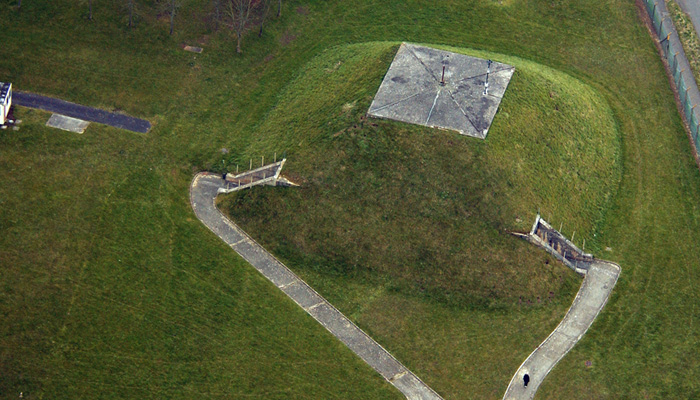
Photo: Crown Copyright
The conspiracy theorist of 90s may have made the jobs of the security guards at Rudloe a little more stressful but they were on to something. The MOD finally released documents under the Freedom of Information Act in 2010 which confirmed the base's involvement in the UK's UFO reporting mechanic.
Up until the early part of 1992 the Flying Complaints Flight (FCF) which was part of the Provost and Security Services, was the central co-ordination point for reports of UFOs made to RAF stations around the country by members of the public. While the department did deal with reports of flying saucers, they'd primarily be dealing with complaints about low flying aircraft or aviation accidents as opposed to alien invasions.
However, the conspiracy theorists claims of a secret underground bunker in Corsham were spot on. In fact, back in the mid-90s, the ufologists researching the base couldn't have imagined how much was actually hidden beneath Corsham. The Ministry weren't just hiding a bunker, they were hiding a whole underground town.
The MOD finally admitted the full extent of the underground facilities in 2004 when Burlington bunker was declassified and photos of the nuclear hideout were made public. The bunker, also known as "Site 3," was to be the Emergency Government War Headquarter and was constructed during the Cold War. It was designed to safely housed hundreds of Whitehall staff, government officials, and heads of public and security services for months following a nuclear strike on British soil.
As the threat from the Soviets faded, Burlington's strategic importance faded with it and having never seen action, the bunker was put in to "care and maintenance" in the 1980s but this is where the true Corsham conspiracy begins.
Advertisement ‐ Content Continues Below.
It turns out that the conspiracy theorist of the 90s were doing the MOD a huge favour, as since the 80s Site 3 had served as a decoy site for more modern secrets underneath Corsham.
The security staff at Corsham were more than happy to perpetuate rumours about the base, entertain the ufologists' theories with leading answering and leak false claims about the use of the underground base in Corsham.
One such example of this was in the 1980s when rumours circulated that work being carried out by the MOD in Corsham was to upgrade Site 3, however the funds were actually being spent to construct a whole new underground facility called CCC just down the road.
CCC, or the Command and Control Centre is a self-contained bunker built within a former World War II ammunition depot, part of the extended complex under Rudloe. CCC is still shrouded in secrecy even today, it's believed its role is to supports the software maintenance of the UK's nuclear deterrent programme, Trident.
The MOD admitted that Burlington was being used as a decoy site in 2004, so now conspiracy theorists are wondering if CCC has taken on the role of the decoy site, protecting a facility that the public have no idea of the existence of.
So, The Conspiracy Nuts Were Right?
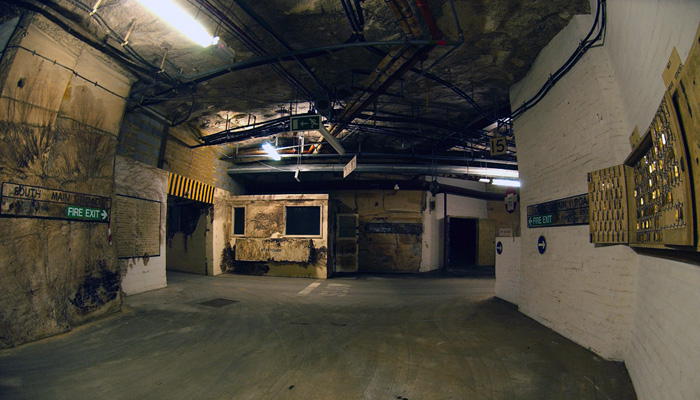
Photo: Crown Copyright
Yeah, they were on the right track but there was so many rumours and so much misinformation being circulated that the true details of Rudloe Manor and Site 3 were exaggerated and lost amongst lies and cover stories.
Researchers suspected that Burlington connected to other disused quarries in the area, vastly over estimating the extent of the old quarry workings which the MOD and War Department before them built their facilities in. Some people even claimed there was a secret tunnel all the way to London. While there were other first and second World War underground depots in the area, none were connected to Burlington.
However, Burlington is part of larger underground area consisting of a wartime ammunition store, various abandoned aircraft factories and more modern facilities such as CCC and PNCC (Primary Network Control Centre).
There were also rumours that Burlington had its own underground railway station allowing government officials to seek refuge in Corsham after leaving London by train. This wasn't strictly true, there is an underground train station in Corsham but it was built to server the ammunition depot and not the Emergency Government War Headquarters.
Until recently there was no underground link between the ammunition depot in Tunnel Quarry and Burlington, so even if government staff from London had been brought in by train they would have had to make their way up to the surface in order to be taken back down in to Burlington. The plan was always to fly the Prime Minister and key cabinet members out of London by helicopter.
My Underground Visit To RAF Rudloe Manor
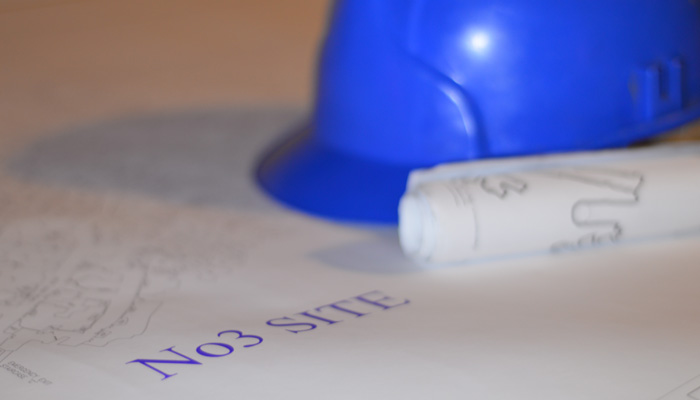
You may be thinking "but how does he know what's going on underneath Corsham?" Well, I've been down there and even without the UFOs and ultra secret projects, Site 3 is still a fascinating place.
Not only have I explored a lot of the disused bunkers in the Corsham area, but I was also invited on an exclusive tour of Burlington itself a few years ago. One Saturday morning in February 2008, myself and seven friends met at the base, which is now called JSU (Joint Support Unit) Corsham.
Security was as tight as ever, we all had to get out of our cars and go in to a large guard house at the gate where we were asked to sign in with ID and get a visitor pass.
We then got back in our cars and our were directed past some global command and communications buildings, it was quite exciting just to be inside the fences and seeing these secretive building up close.
We parked up and then had to go in to another, smaller guard hut where we had to sign in again and exchange our passes we'd been given for another pass, this time to give us access to the underground areas.
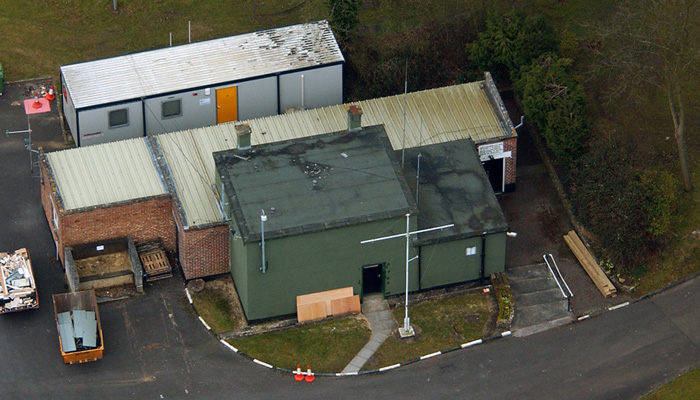
Photo: Crown Copyright
Then it got really exciting, our gang was ushered through the door of a small green building, all that was inside was two elevator doors, with just one button, 'down.'
We stepped into the lift and the doors slid closed behind us and when they reopened, we found ourselves about 30 meters underground, looking out at a well lit, subterranean corridor.
If I didn't know better, I wouldn't have known I was underground. The corridor we were in looked well maintained and like a hallway you'd find in a hospital or office block, white walls, white ceiling tiles, fluorescent strip lights and a light green tiled floor. The only clue to the fact we were underground was the lack of windows.
At this point we were stood in an underground area known as PNCC, the Primary Network Control Centre. The is an active part of the MOD site at Corsham and our guide told us that cameras were strictly prohibited in this part of the quarry. He proceeded to give us the obligatory healthy and safety lecture before we were asked to sign another visitors book and move on in to Burlington.
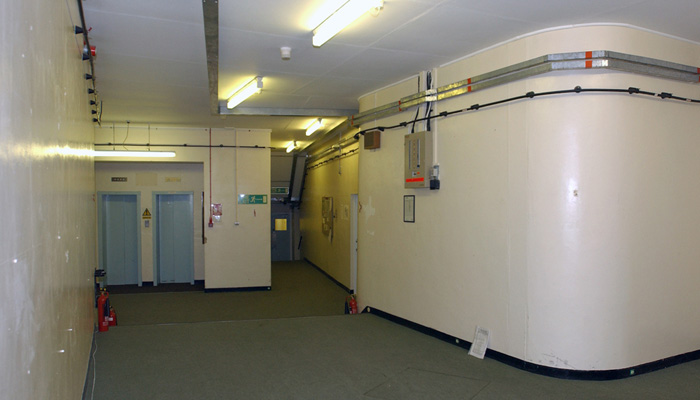
Photo: Crown Copyright
There was a clear change in our surroundings as we walked through the large dust protection doors from the modern tunnels of PNCC in to the abandoned, 1950s tunnels of Site 3.
We were greeted by a wide underground roadway, just one of many, each of which had been given an American-style street name such as "First Avenue".
The roads served 22 distinct areas within the bunker which contained store rooms, accommodation, canteens, government offices, BBC studios, a telephone exchange, and the Prime Minister and war cabinet's map room.
We were shown the the generator hall, kitchens, laundry and air treatment utilities, all of which would have been vital for the survival of the bunker's occupants.
We spent the next four and half hours being guided around the labyrinth of tunnels which made up bunker which had been maintained by staff at the site for the last few decades.
In the huge underground canteen at the heart of the bunker, the caretakers had set out the tables with plates, cutlery, salt and pepper pots and even a fake fruit bowl, creating a snapshot of how the bunker might have looked had it ever been called in to action during the Cold War era.
We visited the huge, wooden telephone exchange where banks of operators would have kept the country's communications running in the event of a nuclear attack. We also visited several newer, automated exchange rooms which would have done the same job as the operators in the later years that the bunker was on stand by.
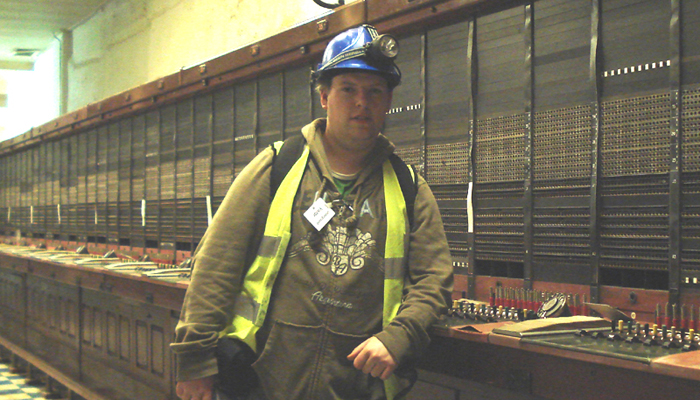
The MOD staff had also taken medical supplies out of storage and used them to set up the small hospital ward to give guests an idea of how it was originally intended to look.
For most of our tour we were driven between points of interest on two little seven-seater electric buggies, they get up to about 30mph in the dark tunnels adding an extra element of fun to the visit.
Our time underground was fast running out, but before we re-surfaced we were taken through into another adjoining MOD underground space, Tunnel Quarry. Here we were shown the huge underground railway station where two half-mile long platforms were once used to load ammunition on to trains, a crucial part of our infrastructure during War World II.
Our tour around Tunnel Quarry was brief and our guides made sure we went nowhere near storage districts 8 and 9 at the eastern end of the quarry where CCC was constructed within the existing underground space.
It's hard to describe how much is hidden beneath Corsham. Burlington alone only accounts for about 20% off the total underground space, but even so it covers an area roughly 1km by 200m.
Maybe Corsham is still hiding some secrets to this day, but it's great to be able to say if I've seen some of what is hidden underground there and whatever else lies hidden from prying eyes in the darkness probably isn't for me to know anyway.
My Video Tour Of Burlington Bunker
© Crown Copyright Notice: Images on this page are reproduced with the permission of the Controller of His Majesty’s Stationery Office.
Learn With Higgypop
Hosted by Paralearning in association with Higgypop, these courses on ghost hunting, paranormal investigations, and occult practices draw on the experience of our team of paranormal writers.

Diploma In Modern Demonology For Paranormal Investigators
This course gives you practical and useful knowledge of ghost hunting and paranormal research, which is invaluable when conducting your own paranormal investigations or as part of a group event.
View Course
Diploma In Practical Ghost Hunting & Scientific Analysis
This course gives you practical and useful knowledge of ghost hunting and paranormal research, which is invaluable when conducting your own paranormal investigations or as part of a group event.
View CourseMore Like This
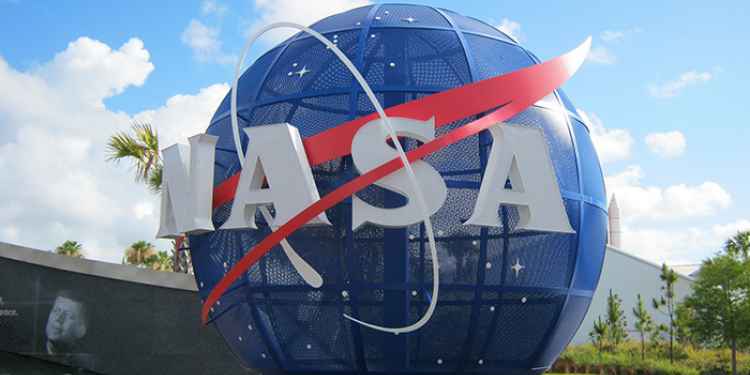
UfosApril 12, 2025
What Do Astronauts Say About UFOs?
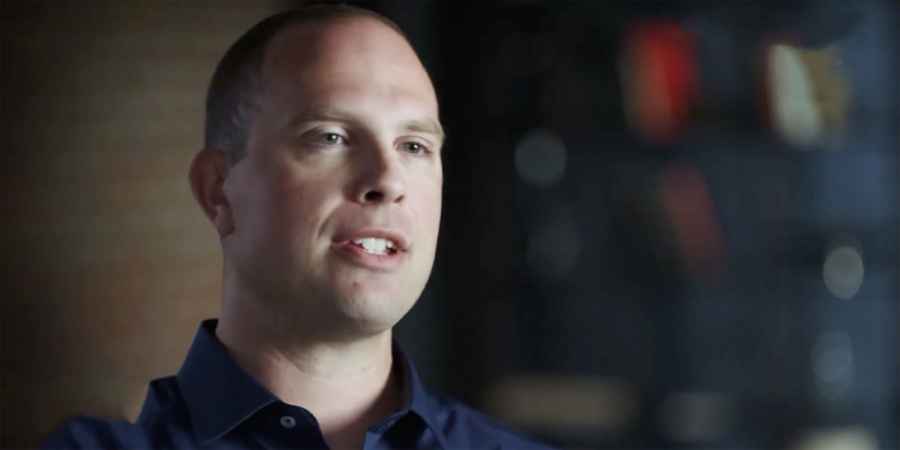
UfosApril 04, 2025
David Grusch Claims US Government Possesses Multiple "Non-Human" Craft
 See More on Audible
See More on Audible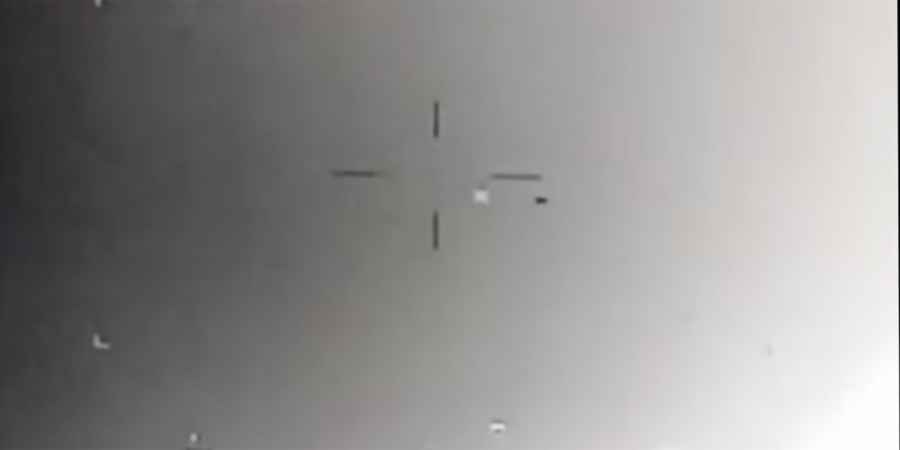
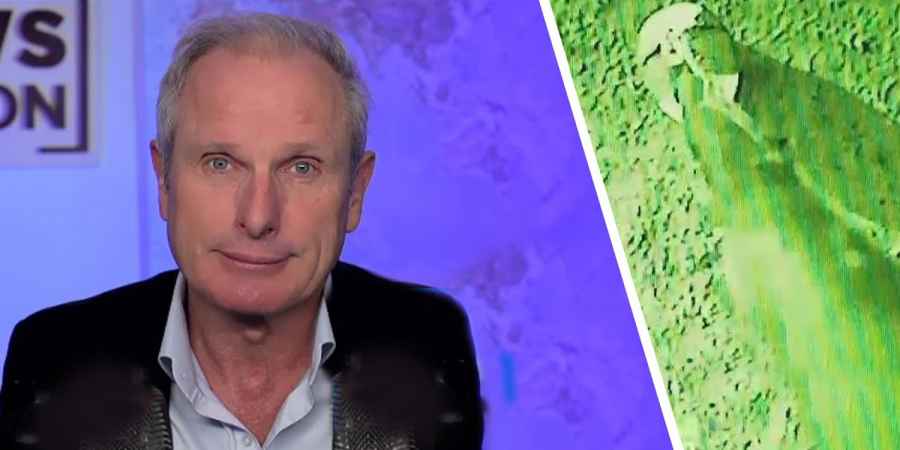

Comments
Want To Join The Conversation?
Sign in or create an account to leave a comment.
Sign In
Create Account
Account Settings
Be the first to comment.